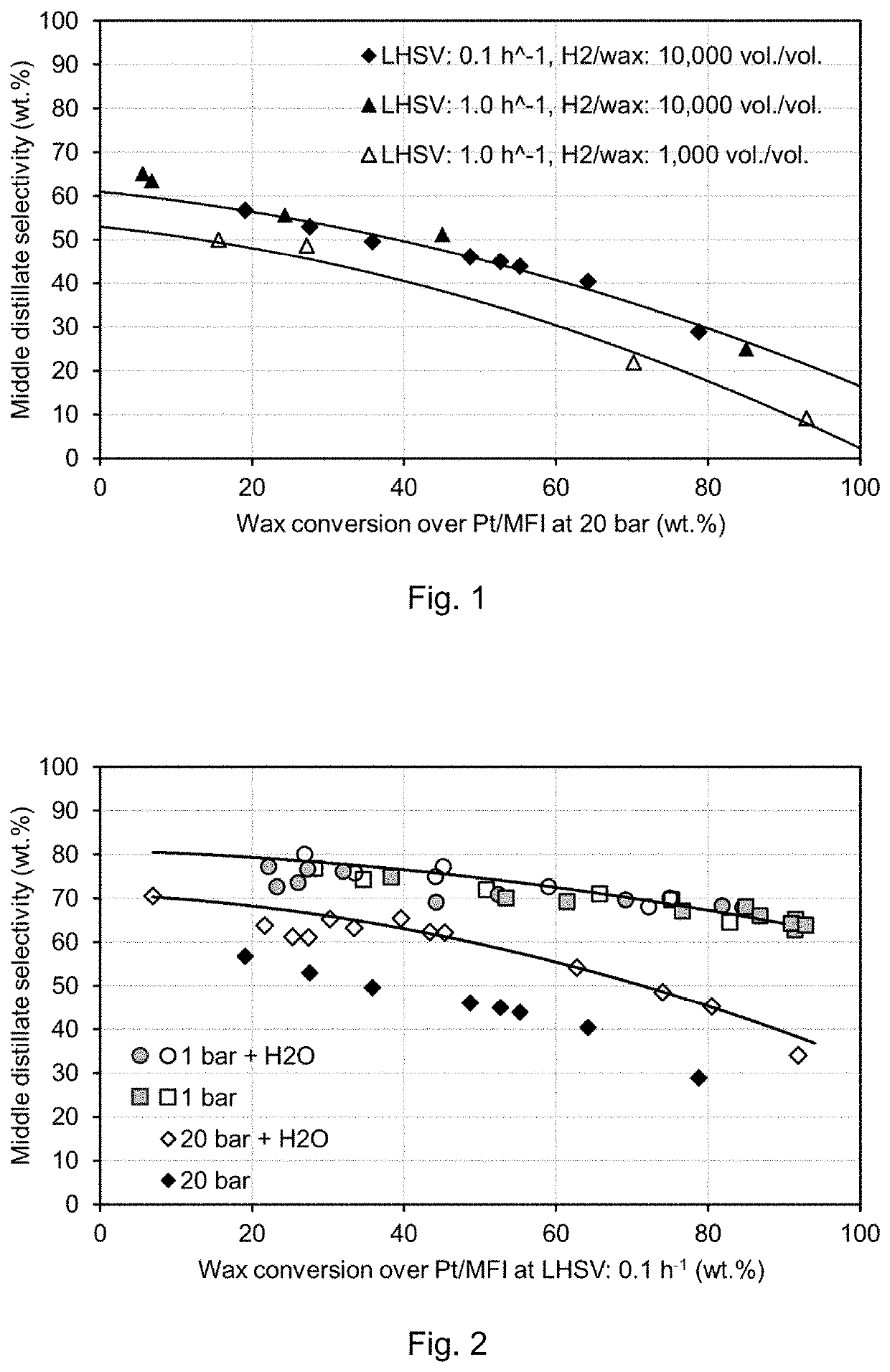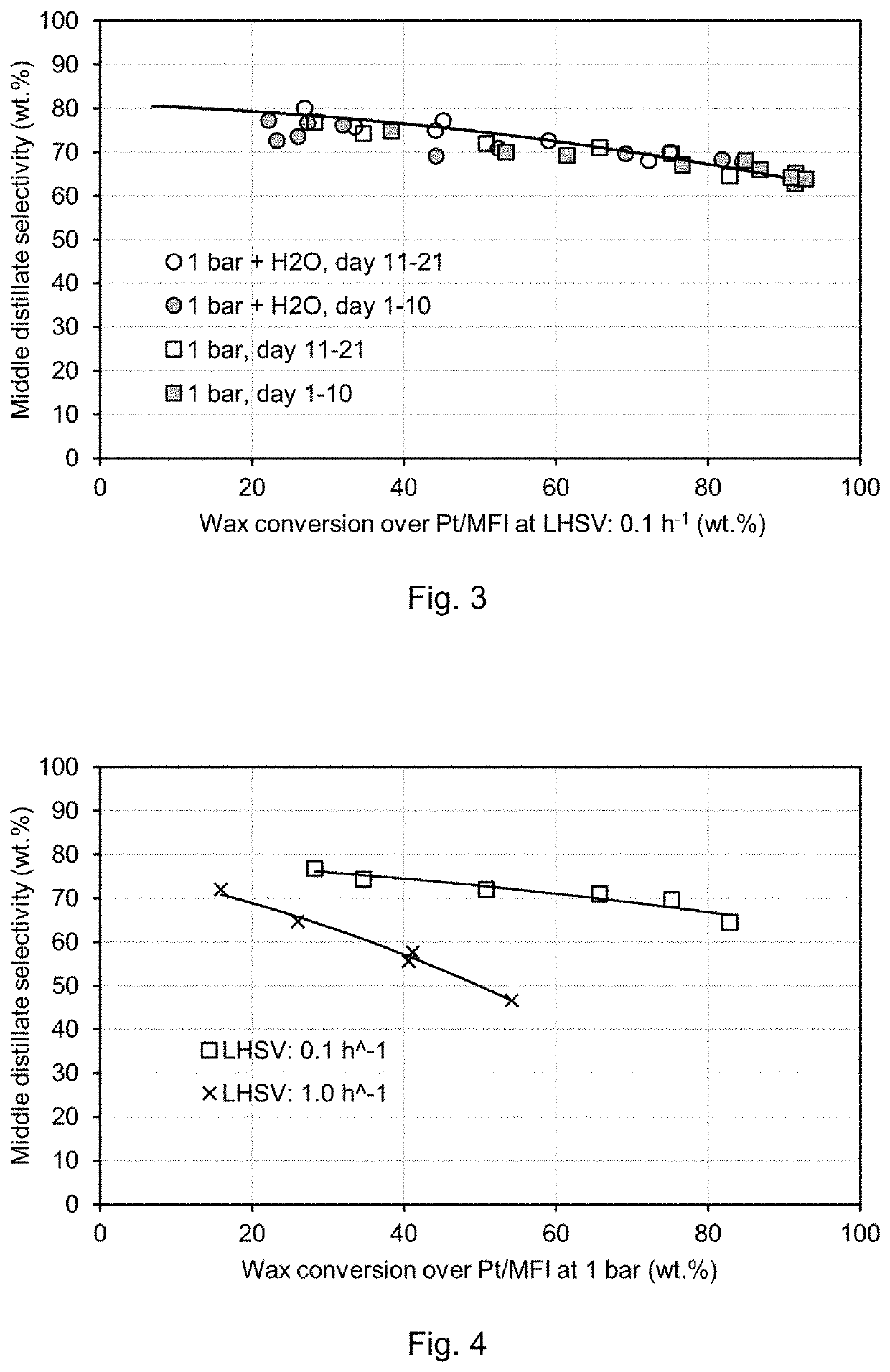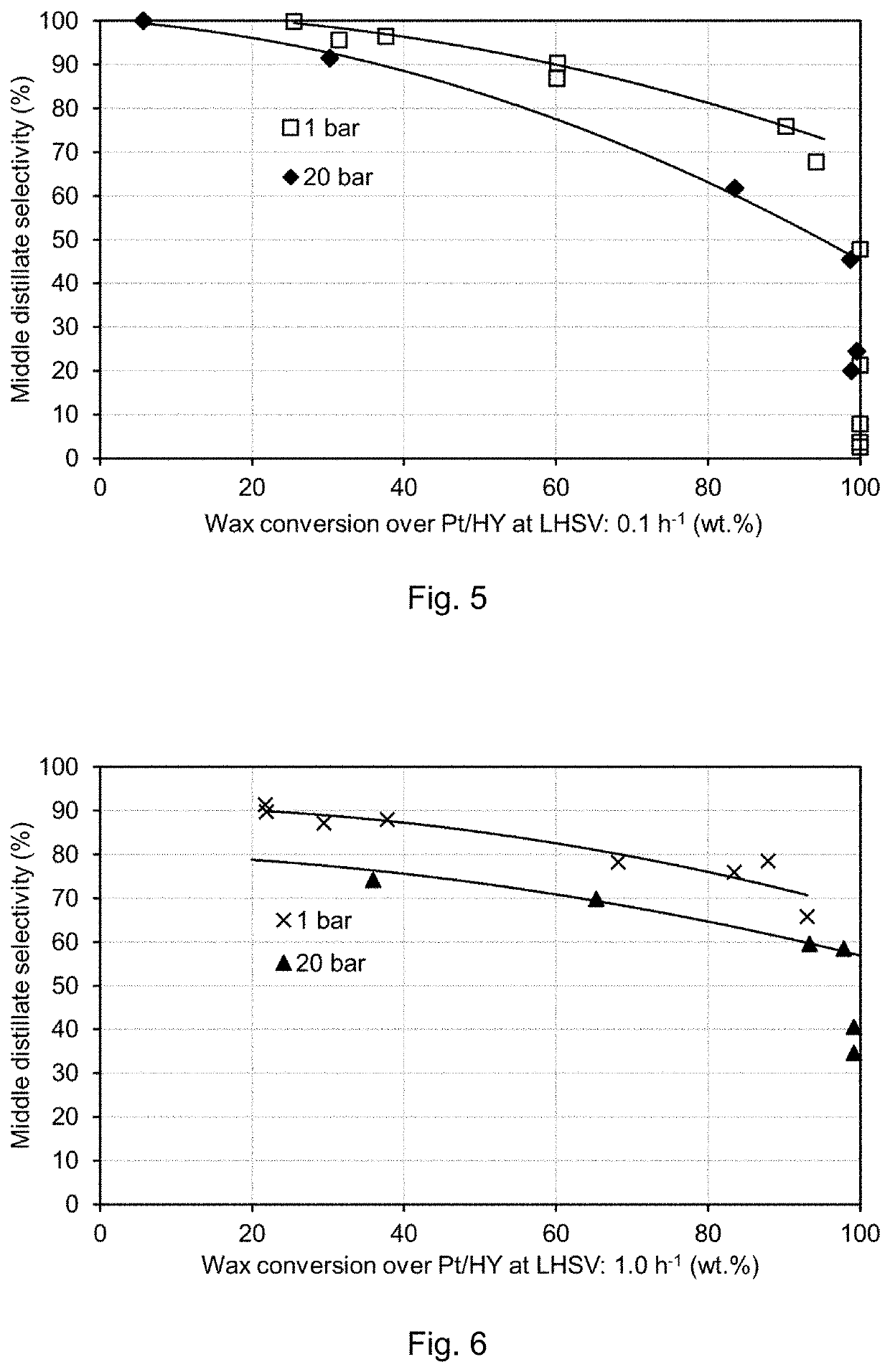Low pressure hydrocracking process for the production of a high yield of middle distillates from a high boiling hydrocarbon feedstock
a technology of high boiling hydrocarbon feedstock and low pressure hydrocracking, which is applied in the direction of physical/chemical process catalysts, chemical/physical processes, molecular sieve catalysts, etc., can solve the problems of continuous cracking of cracking products, the largest cost of hydrocracking units in modern refineries, and the increase of crude oil derived fossil fuel demand
- Summary
- Abstract
- Description
- Claims
- Application Information
AI Technical Summary
Benefits of technology
Problems solved by technology
Method used
Image
Examples
example 1
stillate Formation from Wax Hydrocracking Over Pt / MFI at 20 Bar, the Effect of Increased Gas Flow Rate and the Effect of Lower Space Velocity
[0093]FIG. 1 shows the effect of hydrogen partial pressure on middle distillate formation from the hydrocracking of a wax feed over Pt / MFI, 2 wt. % Pt, at 20 bar, LHSV 1.0 h−1 (1 g catalyst), at H2 / wax=10,000 vol. / vol. (200 ml / min H2), between 235° C.-265° C. and at H2 / wax=1,000 vol. / vol. (20 ml / min H2), between 245° C.-275° C. The result of lowering the space velocity from LHSV 1.0 h−1 to 0.1 h−1 at the high gas flow rate: H2 / wax=10,000 vol. / vol. are also demonstrated in FIG. 1, the temperature is consequently lower: between 205° C.-223° C.
[0094]Typical industrial process conditions for wax hydrocracking over amorphous silica-alumina catalyst include pressure of 35 bar and higher, temperatures of at least 350° C., a liquid hourly space velocity of 1.0 h−1 and a H2 / feedstock volumetric ratio of 1,000 m3 / m3. As can been seen from FIG. 1, under s...
example 2
king Over Pt / MFI at 20 Bar and Atmospheric Pressure (Dry and Wet)
[0097]FIG. 2 shows results for the middle distillate formation from hydrocracking over Pt / MFI catalyst comprising 2 wt. % Pt. The experiments were performed at a liquid hourly space velocity (LHSV) of 0.1 h−1, with 20 g catalyst, 200 ml / min H2, 0.02 ml / min wax feed (H2 / wax=10,000 vol. / vol.), and 0.02 ml / min H2O for the wet experiments. The temperature ranged from 205° C.-225° C. at 20 bar (dry) and 215° C.-240° C. at 20 bar (wet); and from 200° C.-215° C., at 1 bar (wet and dry).
[0098]As can be seen from FIG. 2, with the introduction of water to the hydrocracking experiment at 20 bar, the middle distillate selectivity was markedly increased at all conversion levels. Without thereby wishing to be bound by theory, it is believed that this may be explained by the competitive adsorption of water. Nevertheless, the selectivity remains too low to be considered for industrial scale hydrocracking.
[0099]By lowering the pressure...
example 3
king Over Pt / MFI at Atmospheric Pressure (Dry and Wet) with Increasing and Decreasing Temperature Over Time
[0103]FIG. 3 shows the results for middle distillate formation from hydrocracking over Pt / MFI, 2 wt. % Pt, at LHSV 0.1 h−1, with 20 g catalyst, 200 ml / min H2, 0.02 ml / min wax feed (H2 / wax=10,000 vol. / vol.), and 0.02 ml / min H2O (wet). The temperature was incrementally increased from 200° C. to 215° C. from day 1 to day 10, at 1 bar (wet and dry), and subsequently incrementally decreased from 215° C. to 200° C. from day 11 to day 21.
[0104]As can be seen from FIG. 3, it is apparent that no catalyst deactivation occurred. Rather, in the presence of water the catalyst seems to improve with time, reaching a higher selectivity after 20 days than when steady state was first obtained at 200° C.
PUM
 Login to View More
Login to View More Abstract
Description
Claims
Application Information
 Login to View More
Login to View More - R&D
- Intellectual Property
- Life Sciences
- Materials
- Tech Scout
- Unparalleled Data Quality
- Higher Quality Content
- 60% Fewer Hallucinations
Browse by: Latest US Patents, China's latest patents, Technical Efficacy Thesaurus, Application Domain, Technology Topic, Popular Technical Reports.
© 2025 PatSnap. All rights reserved.Legal|Privacy policy|Modern Slavery Act Transparency Statement|Sitemap|About US| Contact US: help@patsnap.com



